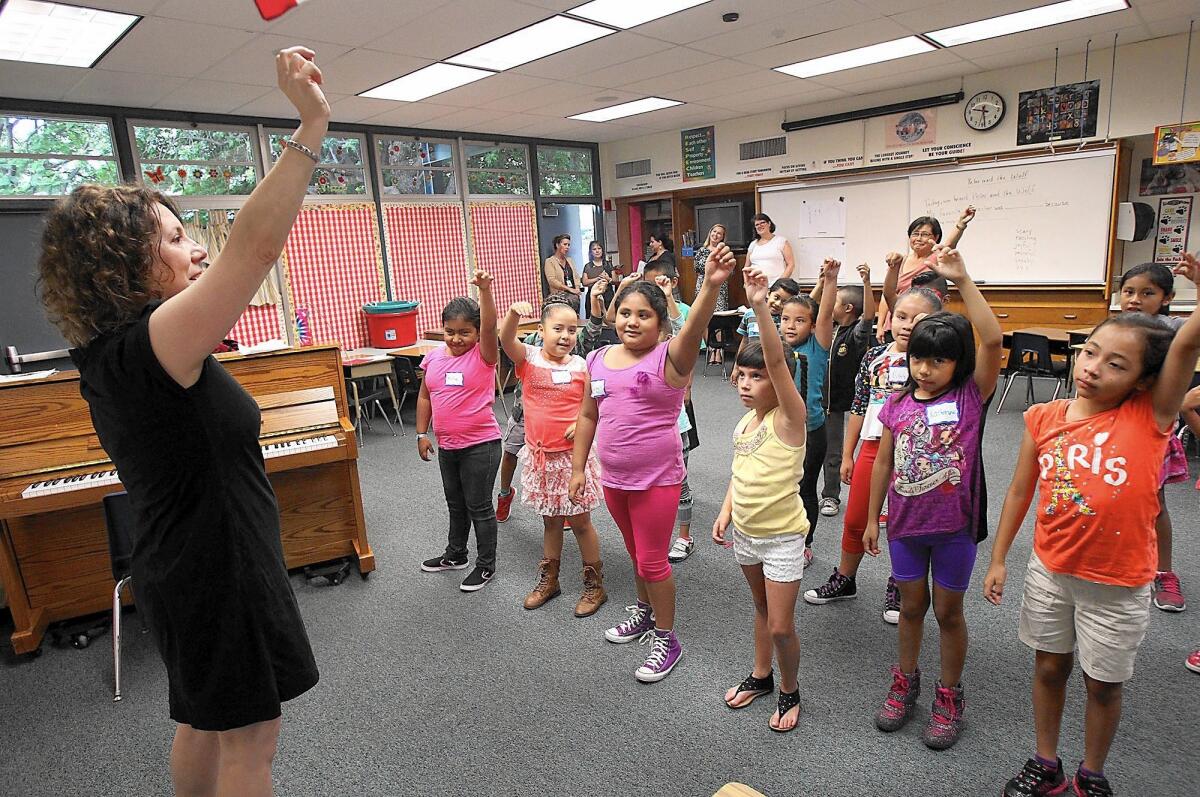Arts and crafts help students learning English polish their speaking skills

Summer school has gone beyond the stereotype for students attending classes at Olivewood Elementary School in Lake Forest with the help of Arts Teach instructors from the Segerstrom Center for the Arts.
For the past four weeks, around 320 children from the Saddleback Valley Unified School District have been spending half of their summer school study time making puppets, writing scripts and learning music.
The students, who are entering grades first through eighth this fall, all have one thing in common — English is not their first language.
As part of the Saddleback district’s English Language Development Summer Enrichment Program, the young learners spend half the morning with the Segerstrom teachers and the other half learning math, science, social studies and writing with teachers from the district.
Both groups of educators have the same primary goal: to help their students develop their English speaking skills.
“It’s integrated arts to the max,” said John Zeretzke, who teaches world music. “The way they learn vocabulary, patterns and symbolism in art are things that’ll cross over to other disciplines like math and science.”
All children in the program have taken the California English Language Development Test, an exam that students whose home language is not English must take each fall until they are re-classified as fluent in English.
Students in the district who have tested as intermediate in English are invited to join the summer program.
Classes are separated into grade levels with each class focused on learning one art form. The Segerstrom teachers lead classes that focus on hip-hop routines, singing and music theory, drawing and instrument-making.
Ellen Schulze, who teaches puppet-making, said she started off her first-grade class slowly by teaching them the names of shapes.
“At the beginning, they learned shapes like ‘circle’ and ‘oval,’” Schulze said. “Then soon, they started learning words like ‘cylinder’ and ‘rectangular prism.’”
In order to make their hand puppets and marionettes out of their polystyrene, cardboard and fabric, the students needed to learn the shapes that would construct them.
Schulze had also given each student a journal to write scripts for their puppets. She had them write their lines daily during the program.
Rubén Garfias is teaching theater and has his seventh- and eighth-grade students write their own plays.
“On the first day, not a sheet of paper or pencils were on their desks,” Garfias said. “Now, if my lips are moving, their pencils are moving twice as fast taking notes.”
Each day, Garfias and his students discuss story ideas and perform their work for one another.
“[Rubén] taught us that if we make a mistake on stage we can always fix it,” student Omar Maya, 13, said. “He shows us not to be afraid.”
Zeretzke brought in bamboo and plastic pipes for his fourth- and fifth-grade class to make flutes from the Greek, African and Mayan cultures.
When decorating their instruments, he had students write haikus about the culture the instrument comes from.
“Each year, I hear at least one kid say the same thing — ‘I don’t want school to end,’” Zeretzke said.
The camp will conclude with an open house Thursday when students will share with their parents the performances and artwork they developed throughout the program.